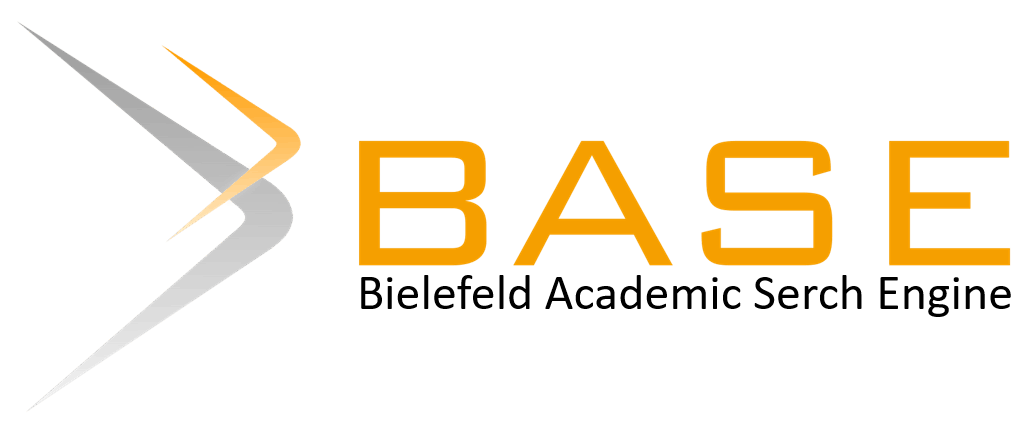The effect of Google Classroom assisted STEM approach on students’ creative thinking skills
Abstract
Low creative thinking skills, the approach used in learning has not facilitated students to understand problems and express many ideas. The purpose of this study was to determine the effect of the Google Classroom-assisted STEM approach on creative thinking skills. This study used a quantitative research type with Quasi-Experimental Design. The population in this study were all students of class VIII SMP Negeri 20 Bandar Lampung, with a sampling technique that is cluster random sampling obtained Class G as the experimental class and Class H as the control class. The data collection technique used a test instrument in the form of an essay test to measure students' creative thinking skills. Hypothesis testing was using the Independent Sample T-test which was preceded by a pre-requisite test for normality and homogeneity of the data. The results of the t-test hypothesis test obtained a significance of 0.00 <0.05, meaning that H0 is rejected so that it can be concluded that the STEM approach assisted by Google Classroom has an effect on students' creative thinking, with the acquisition of each indicator: 79.7% originality indicator, 80,7% flexibility,82% elaboration, and 81.2% fluency.This increase can be seen from the impact on students that becoming more enthusiastic by motivating each other among friends through creative thinking so that they are able to make decisions and solve problems well.
Keywords
Full Text:
PDFReferences
Alfiah, L. N., Rokhim, D. A., & Wulandari, I. A. I. (2020). Analysis of the impact of government recommendations on learning at home for educators. Journal of Education Administration and Management, 3(3), 216-223.
Alim, N., Linda, W., Gunawan, F., & Saad, M. S. M. (2019). The effectiveness of Google Classroom as an instructional media: A case of state islamic institute of Kendari, Indonesia. Humanities & Social Sciences Reviews, 7(2), 240-246.
Andrini, V. S. (2016). The effectiveness of inquiry learning method to enhance students' learning outcome: A theoritical and empirical review. Journal of Education and Practice, 7(3), 38-42.
Antink-Meyer, A., & Lederman, N. G. (2015). Creative cognition in secondary science: An exploration of divergent thinking in science among adolescents. International Journal of Science Education, 37(10), 1547-1563.
Ardiansyah, H., Riswanda, J., & Armanda, F. (2021). The effect of the PBL model with the STEM approach on the cognitive competence of students in the digestive system material for class XI at SMA/MA. Bioilmi: Journal of Education, 7(1), 46-51.
Ardianto, D., Permanasari, A., Firman, H., & Ramalis, T. R. (2019). STEM-Fc model design in geoscience courses. Journal of Science Education and Practice, 3(1), 48-57.
Ariani, L., Sudarmin, S., & Nurhayati, S. (2019). Analysis of creative thinking in the application of problem based learning approaches to science, technology, engineering, and mathematics. Journal of Chemistry Education Innovation, 13(1), 2307-2317.
Arifin, N. (2020). The effectiveness of problem-based learning in STEM learning is seen from the fighting spirit and mathematical problem-solving abilities of PGSD students. Journal of Indonesian Mathematics Education, 5(1), 31-38.
Ariyatun, A., & Octavianelis, D. F. (2020). The effect of STEM-Integrated problem-based learning models on students' critical thinking skills. Journal of Educational Chemistry, 2(1), 33-39.
Armandita, P. (2017). Analysis of the ability to think creatively in physics learning in class XI MIA 3 SMA Negeri 11 Jambi City. Journal of Education Science Research, 10(2), 129-135.
Bujuri, D. A., & Baiti, M. (2018). Development of integrative science teaching materials based on a contextual approach. Skilled: Journal of Education and Basic Learning, 5(2), 184-197.
Corebima, A. D., Susilo, H., & Zubaidah, S. (2017). Creative thinking of low academic student undergoing search solve create and share learning integrated with metacognitive strategy. International Journal of Instruction, 10(2), 245-262.
Dare, E. A., Ellis, J. A., & Roehrig, G. H. (2018). Understanding science teachers’ implementations of integrated STEM curricular units through a phenomenological multiple case study. International journal of STEM education, 5(4), 1-19.
Davidi, E. I. N., Sennen, E., & Supardi, K. (2021). Integration of the STEM (Science, Technology, Engineering and Mathematics) approach to improve the critical thinking skills of elementary school students. Scholaria: Journal of Education and Culture, 11(1), 11–22.
Gunawan, G., Harjono, A., Sahidu, H., & Nisrin, N. (2018). Improving students’ creativity using cooperative learning with virtual media on static fluida concept. Journal of Physics: Conference Series, 1006, 1-7.
Handayani, U. F., Sa'dijah, C., & Susanto, H. (2018). Analysis of middle school students' mathematical creative thinking ability in solving 'PISA' adoption questions. Journal of Math Educator Nusantara: A vehicle for the publication of scientific papers in the field of mathematics education, 4(2), 143-156.
Hasan, R., Lukitasari, M., Utami, S., & Anizar, A. (2019). The activeness, critical, and creative thinking skills of students in the lesson study-based inquiry and cooperative learning. Indonesian Journal of Biology Education, 5(1), 77–84.
Hassan, M. N., Abdullah, A. H., Ismail, N., Suhud, S. N. A., & Hamzah, M. H. (2019). Mathematics curriculum framework for early childhood education based on Science, Technology, Engineering and Mathematics (STEM). International electronic journal of mathematics education, 14(1), 15-31.
Heggart, K. R., & Yoo, J. (2018). Getting the most from Google Classroom: A pedagogical framework for tertiary educators. Australian Journal of Teacher Education, 43(3), 140–153.
Indrayani, A., Susantini, E., & Widodo, W. (2016). The effectiveness of developing problem solving model learning devices to train students' creative thinking skills. Science Education Research Journal, 5(2), 1068-1076.
Irfana, S., Yulianti, D., & Wiyanto, W. (2019). Development of student worksheets based on science, technology, engineering, and mathematics to improve students' creative thinking skills. Unnes Physics Education Journal, 8(1), 83-89.
Ismail, I., Permanasari, A., & Setiawan, W. (2016). The effectiveness of STEM-based virtual labs in increasing scientific literacy of students with gender differences. Journal of Science Education Innovation, 2(2), 190-201.
Kelley, T. R., & Knowles, J. G. (2016). A conceptual framework for integrated STEM education. International Journal of STEM education, 3, 1-11.
Khaeroningtyas, N., Permanasari, A., & Hamidah, I. (2016). STEM learning in material of temperature and its change to improve scientific literacy of junior high school. Journal of Indonesian Science Education, 5(1), 94-100.
Lestari, D. A. B., Astuti, B., & Darsono, T. (2018). Implementation of worksheets with a STEM (science, technology, engineering, and mathematics) approach to improve students' critical thinking skills. Journal of physics and technology education, 4(2), 202-207.
Mardiyah, F. F., Saridewi, N., & Bahriah, E. S. (2021). Chemistry teachers’ perceptions on STEM (Science, Technology, Engineering, and Mathematics) Education. Journal of Science Research and Learning, 7(2), 193-215.
Mashudi, M. (2021). Modern learning equips students with 21st century skills. Al-Mudarris: Scientific Journal of Islamic Education, 4(1), 93-114.
Nuranggraeni, E., Effendi, K. N. S., & Sutirna, S. (2020). Analysis of mathematical creative thinking abilities in terms of students' learning difficulties. Journal of Research on Education and Teaching of Mathematics, 6(2), 107-114.
Octaviyani, I., Kusumah, Y. S., & Hasanah. (2020). Improving students' mathematical creative thinking skills through a project-based learning model with a stem approach. Journal on Mathematics Education Research, 1, 10–14.
Oktapani, N., & Hamdu, G. (2020). STEM learning design based on 4C abilities in elementary schools. Scientific Journal of Basic Education, 7(2), 99-108.
Onsee, P., & Nuangchalerm, P. (2019). Developing critical thinking of grade 10 students through inquiry-based STEM learning. Journal of Science Research and Learning, 5(2), 132-141.
Primaningsih, D., & Murtafiah, W. (2019). Enhancing creative thinking ability of students in probability topics through react learning. JIPM (Journal of Mathematics Education), 8(1), 58-64.
Priyani, N. E., & Nawawi, N. (2020). Ethno-stem based science learning assisted by digital microscopes to improve science process skills in border schools. WASIS: Educational Scientific Journal, 1(2), 99-104.
Ritonga, S., & Zulkarnaini, Z. (2021). Application of the STEM approach to improve students' critical thinking skills. Journal of Teacher Studies and Learning, 4(1), 75-81.
Salamiyah, Z., & Kholiq, A. (2020). Development of ecthing (e-book creative thinking) to improve creative thinking skills of vocational high school students on ohm's law material. Physics Education Innovation, 9(3), 342-348.
Sartika, W. S. (2021). The Google Classroom for learning writing: students’ initial perceptions. Journal of English Teaching, Literature, and Applied Linguistics, 4(1), 59-66.
Septiani, I., Lesmono, A. D., & Harimukti, A. (2020). Analysis of students' learning interest using a problem-based learning model with a STEM approach to vector material in class X MIPA 3 SMAN 2 Jember. Journal of Physics Learning, 9(2), 64-70.
Shaharanee, I. N. M., Jamil, J. M., & Rodzi, A. S. S. M. (2016). The application of Google Classroom as a tool for teaching and learning. Journal of Telecommunication, Electronic and Computer Engineering, 8(10), 5-8.
Shahroom, A. A., & Hussin, N. (2018). Industrial revolution 4.0 and education. International Journal of Academic Research in Business and Social Sciences, 8(9), 314-319.
Sister, D., Syahputra, E., & Sinaga, B. (2020). Analysis of students’ difficulties in mathematical creative thinking on problem-based learning model. International Journal of Scientific and Technology Research, 9(3), 3842-3845.
Srikoon, S., Bunterm, T., Nethanomsak, T., & Tang, K. N. (2018). Effect of 5P model on academic achievement, creative thinking, and research characteristics. Kasetsart Journal of Social Sciences, 39(3), 488-495.
Sukmawati, S., & Nensia, N. (2019). The role of Google Classroom in ELT. International Journal for Educational and Vocational Studies, 1(2), 142-145.
Sumarni, W., Wijayati, N., & Supanti, S. (2019). Analysis of students' cognitive abilities and creative thinking through project-based learning with a STEM approach. J-PEK (Journal of Chemistry Learning), 4(1), 18-30.
Suwardana, H. (2018). The industrial revolution 4.0 is based on a mental revolution. JATI UNIK: Scientific Journal of Industrial Engineering and Management, 1(2), 109-118.
Wahyunita, I., & Subroto, W. T. (2021). The effectiveness of the blended learning model with the STEM approach in an effort to improve students' critical thinking skills. Edukatif: Journal of Educational Sciences, 3(3), 1010-1021.
DOI: https://doi.org/10.17509/aijbe.v5i2.43832
Refbacks
- There are currently no refbacks.
 AIJBE is under Creative Commons Attribution-ShareAlike 4.0 International License
AIJBE is under Creative Commons Attribution-ShareAlike 4.0 International License









